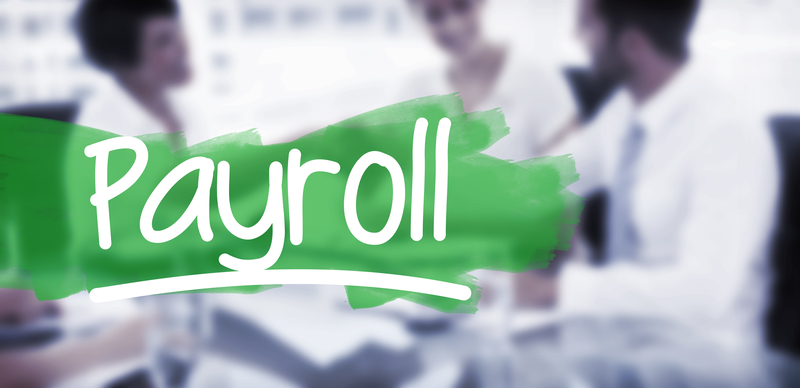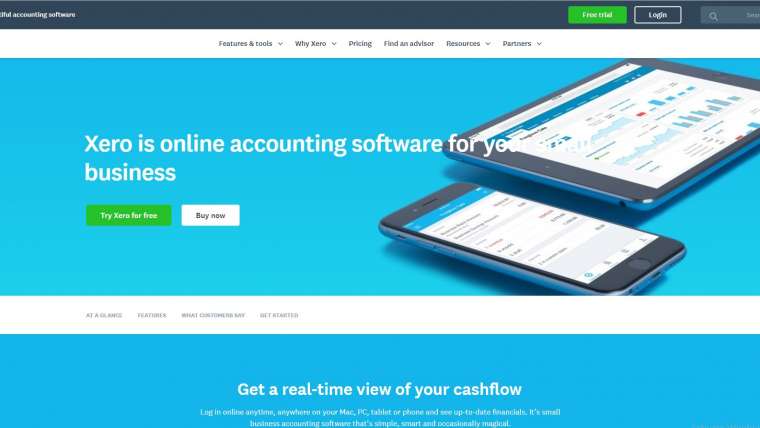
How can I pay myself through the company?
When you own a registered company and work for your own business, there are different approaches to pay yourself a wage through the company. For example, a common strategy is to draw a set salary and then also take from the profits in the form of a dividend.
For example, if you take a salary of the amount that entitles you to state pension benefits, you can then make sure you receive this at retirement age. Make sure the amount is within the personal allowance and within the threshold for employer and employee national insurance.
Alternatively, you might want to take a higher salary and lower the company’s overall profits that are liable for corporation tax payment. Again, see what the current limit is to see how much pay you would need to take to trigger this. You can then take an additional income as a dividend and this is a more tax-efficient method than salary or bonuses.
The amount of tax paid depends on the individual’s tax band although there is a dividend tax allowance of £5000 a year (2016-17 rates). Once you have exceeded this amount you will pay 7.5% tax on basic taxpayer rate, 32.5% on the higher rate and 38.1% on additional rate.
One thing to note is that dividends can only be paid from profits while a salary is paid regardless. This means if the business doesn’t make any profits, you can’t take a dividend, but you can take a salary.
See also our affordable payroll services.
What’s better: A salary or a dividend?
Currently, when you work for your own limited company, you are allowed to pay yourself a wage and then take a dividend from the company’s profits. It is often said to be best to pay a low wage to yourself then take the dividend, rather than taking a higher salary. Part of the reason for this is that there’s no requirement to pay National Insurance on dividends.
The process of calculating the dividend is a complex one but generally, it is often best to pay a low salary that is beneath the personal tax allowance if this is sensible. This will cut down the tax you need to pay and also the national insurance. This personal allowance does change each year so make sure you are up to date on what this is before choosing your salary amount.
Dividends can only be paid if the company has made a profit, but this profit can then be distributed among shareholders. Expenses and corporation tax must be paid before a dividend is paid. There is currently a £5000 allowance for dividends before you have to pay tax and as long as your salary and dividend are less than the first increased tax band, currently £32,000, then you will only pay the basic 7.5% rate on the dividend over £5000.
This is why most companies pay both a salary and a dividend to ensure that you make the best of the current tax rules and do the best for the company. Should you experience a bad year, however, be aware that the amount available for that dividend will be reduced.
Do I have to invoice my clients?
If you sell a product or service to a customer, you need to give them a bill (invoice) if you or they are registered for VAT. An invoice is different from a receipt which is issued after payment is received to confirm the amount received.
Invoices need to contain specific information according to HMRC. These include:
- A unique identification number
- The name, address and contact info for your company
- The name and address of the company receiving the invoice
- A description of what you are charging for
- The date services or goods were provided, known as a supply date
- Date of the invoice
- Amount being charge
- VAT if applicable
- Total amount
If you are a sole trader, you also need to include your name as well as the business name and the address where legal documents can be delivered if you are using a business name. for limited companies, the name must match that on the certificate of incorporation.
You can set up terms as you want on an invoice including discounts for early payment and charges for late payment. Customers have 30 days unless stated otherwise to settle the account and you can charge interest for late payments.
When is payroll paid?
When you set up your business with employees, one of the first decisions to make is how often you are going to pay them. There are different classifications available for salaried versus hourly employees, but everyone should be paid at the same time.
A pay period is the length of time over which paid time is recorded and then the payment made. These include weekly, bi-weekly, semi-monthly and monthly.
A weekly pay period results in 52 payments a year – this is popular with hourly staff and are often paid a week in arrears, giving payroll staff time to receive working hours and calculate pay Bi-weekly results in 26 payments a year, although some years might see 27 depending on pay date
Semi-monthly results in 24 payments a year as it is twice a month payment rather than every two weeks.
Month payments result in 12 payments a year and is most commonly used for salaried staff
You also need to organise paying PAYE as part of your payroll to ensure you are paying tax and national insurance on your staff’s wages in line with the government guidelines. If you are late reporting this information, you can receive a late filing notice and there can be a penalty if there isn’t a valid reason for this.
How do I set up payroll?
If you decide to operate your business payroll without the use of a payroll service, then there are certain things you need to do before you start paying your staff.
First, you need to register as an employer with HMRC and get a login for the PAYE Online system.
Next, you should choose payroll software to be able to record your employee’s details, calculate their pay and deductions then report this information to HMRC.
You will need to collect and keep records of how much you pay staff, their tax and national insurance contributions as well as overtime and you need to let HMRC know about the people working for you.
You then need to record pay, make deductions and report this to HMRC on or before the first payday. National Insurance and tax is then paid to HMRC.
In addition, you will need to complete certain annual tasks and reports to HMRC.
The records
The following records must be kept for legal purposes:
- Amount paid and deductions
- Reports and payments made to HMRC
- Employee leave and sickness
- Tax code notices
- Any taxable benefits or expenses
- Any documents relating to the Payroll Giving Scheme such as agency contract and employee authorization forms
These documents must be kept for three years from the end of the tax year they are regarding.
When do I need to register with HMRC?
If you are starting as a self-employed sole trader, you need to notify HMRC when you do this. This will allow them to register you for both income tax through the Self-Assessment system and also for National Insurance.
If you don’t do this immediately, you need to do it by 5th October of the second tax year of the business or you can receive a fine. It is worth doing immediately so that you are on track for paying tax and national insurance at the end of your first year if applicable.
If you are setting up a company that you will work for, such as a limited company, you need to register this with HMRC at the same time as you register your company’s incorporation with Companies House. You can register some types of company on the HMRC website as well as in writing, although this does take longer. You can also use specialist software or a company formations service to do this. You will receive a certificate of incorporation once this is done.
Once the company is founded, you will need to register with your Unique Taxpayer Reference to pay Corporation Tax for the profits of the business. This is provided when you set up your company and you can then use the website or helpline to register.
If you are also going to be an employer, you need to register with HMRC when you start employing staff or use subcontractors for work. This must be done before the first payday and the process can take around 2 weeks so leave plenty of time. You must still register if you are only employing yourself as the director of a limited company, for example.
How do I pay HMRC?
There are several different ways to pay your tax bill. The time needed to clear the payment should be taken into consideration especially if you are approaching a payment deadline.
For same or next day payments, you can pay by online or telephone banking using the Faster Payments option or the CHAPS system. You can also pay by debit or credit card online or at your bank or building society. The Post Office also offers a facility to pay your bill there. For the latter two, you will need a paying in slip from HMRC to do this.
If you have three or more working days in which to make the payment, you can send it via BACS or by cheque through the post. If you have already set up a Direct Debit with HMRC, you can also send it this way. If not, you will need to do this and allow at least five working days for them to process the payment.
If the deadline falls on a weekend or bank holiday, make sure HMRC receives the payment on the last working day before this to avoid any penalties.
What cost do I incur in paying an employee?
Having staff means having to pay them and this means running payroll. It also means that you need to make tax and national insurance contributions on their behalf to HMRC based on the wages that they earn.
The PAYE system is operated by HMRC and is compulsory for almost all businesses in the UK. There are no charges for using it, but you can be fined if you don’t use it to show the tax and NI contributions for your business.
To provide the information needed for PAYE, you will need to collect and keep records about amounts paid and the people you have paid them to. This means either doing it yourself, often with bookkeeping software or paying someone to do this.
For smaller businesses, software or a freelance accountant may be the best option. Software such as QuickBooks has a relatively small monthly cost to monitor information, but you need to manage it and it isn’t a hands-free system. Hiring someone on a regular basis to run payroll will cost more but you don’t need to do anything apart from providing the relevant information.
Depending on the size of your company and complexity of the accounts, you may choose to either have an accountancy firm handle the payroll alongside other financial accounts or employ someone within the business to handle it. Costs vary depending on what services you need and the experience of the individual. Costs such as accountant’s fees can be registered as business expenses against the company’s overall tax bill.
Finally, most companies use BACS to pay their staff through the business bank account. Some accounts charge for all services, so you need to be aware of the cost from the bank for the transaction.
What information do I need to correctly process an employee’s pay?
To set up payroll and to ensure people get their pay, you need certain information. This is also information you need for the PAYE system that is used to pay tax and national insurance contributions to HMRC.
For every employee you will need:
- Date of birth
- Gender
- Full address
- Start date of the job
In addition, for the P45, you will need:
- Full name
- Date they left their last job
- Total pay and tax paid to date for the current tax year
- Any student loan deductions
- Their national insurance number
- Their existing tax code
You will also need the information for the bank they want to receive the payment into, so you can input this into your payroll software and process the payment correctly.
The payroll software or person responsible for the payroll will also need a record of what hours they have worked or their salary to ensure they are paid the correct amount. This will also allow deductions such as tax and national insurance to be correctly calculated.
When does one get a P45 and P46?
You should receive a P45 when you stop working for a company, get laid off or you leave your position for any reason. This shows information including your PAYE reference code, how much you earned in the last year and how much tax you paid. The P45 comes in three parts. When you get another job, you give the 2nd and 3rd parts to your new employer so they can use the right information on your pay such as your tax code. If you don’t want them to see your previous pay, you can send these to the local tax office along with details of where you are working.
The P46 is issued if you lose your P45 or were not given one by your employer in situations such as they have gone bankrupt. You can give your new employer this and then they can add the right tax code to it once they have set it up.
What is a P35?
If you have people working for you within the company or if you are classed as running the company yourself, then you need to submit an Employer Annual Return to HMRC. This consists of two documents, a P14 for income tax, national insurance and other employee deductions and a P35, a summary of all deductions applied to all employees during that year.
This paperwork needs to be filed even if the employee didn’t earn enough to pay tax or national insurance. Most of the time you or your accountant can do this online. If the company files its return after May 19th, then a penalty of £100 per 50 employees will be applied and if the return isn’t received within 5 months, a penalty noticed will be sent on September 19th and even four months after that until it is received.
How do I draw money from my business?
The most common way to draw money from a business is to receive a salary from it. As the director or owner of the company, you can set yourself a salary each month. However, some people keep this lower than the company can afford to help offset expenses like income tax and national insurance.
Dividends are another common way to receive money from the company. Once the company makes a profit, you pay corporation tax. After this, what is left can be split among shareholders as a dividend. The whole of this amount doesn’t have to be paid to them, it depends on the terms of their shares and the articles of association. The owner of the business can pay themselves from this, but you need to remember you will still need to pay tax on this income so effectively the money is taxed twice.
A director’s loan is a way to describe the money you invest in the business when you start and that can be paid back to you once the business is making a profit. This income isn’t subject to tax but if you only take cash as a loan repayment each year, you may lose out on annual income and dividend allowances.
A pension is a long-term way to draw money from the business and you can set your contributions at higher than the basic rate if the company is making money. This saves on corporation tax but you cannot access the money until you retire.
Reimbursable expenses are things like a fuel allowance for using your car in connection with the company and are income tax-free. However, not all expenses can be claimed for under the system.

